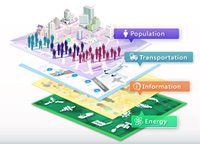Difference between revisions of "Lesson 2"
Jump to navigation
Jump to search
| Line 61: | Line 61: | ||
==Core Readings== | ==Core Readings== | ||
| − | |||
* [http://downloads2.esri.com/support/documentation/ao_/Modeling_our_World.pdf Modeling Our World: The ESRI Guide to Geodatabase Design] | * [http://downloads2.esri.com/support/documentation/ao_/Modeling_our_World.pdf Modeling Our World: The ESRI Guide to Geodatabase Design] | ||
* [http://en.wikipedia.org/wiki/Map_Projection Map Projection] | * [http://en.wikipedia.org/wiki/Map_Projection Map Projection] | ||
| Line 68: | Line 67: | ||
== All About QGIS == | == All About QGIS == | ||
| + | |||
| + | * [https://docs.qgis.org/3.4/en/docs/gentle_gis_introduction/ A Gentle Introduction to GIS]. Section on Vector Data, Vector Attribute Data, Raster Data, Topology and Coordinates Reference Systems. | ||
Revision as of 10:36, 14 August 2019
|
|
|
|
|
|
The Evil is in The Data
Contents
Geospatial Data Models and Modelling
Representing Real World Geography
- Digital representation
- The fundamental problem
- The spatial data models
- Topology data models
Georeferencing
- Basic concepts of projections and coordinates
- Georeferencing
- Geocoding
Geospatial data modelling
- Geospatial database design
- Spatial Metadata
- Spatial indexing
- Multi-user editing and versioning
Geospatial Data Repositories
- File-based
- Geospatial RDBMS
- Cloud based geospatial database
Readings
Core Readings
All About QGIS
- A Gentle Introduction to GIS. Section on Vector Data, Vector Attribute Data, Raster Data, Topology and Coordinates Reference Systems.
